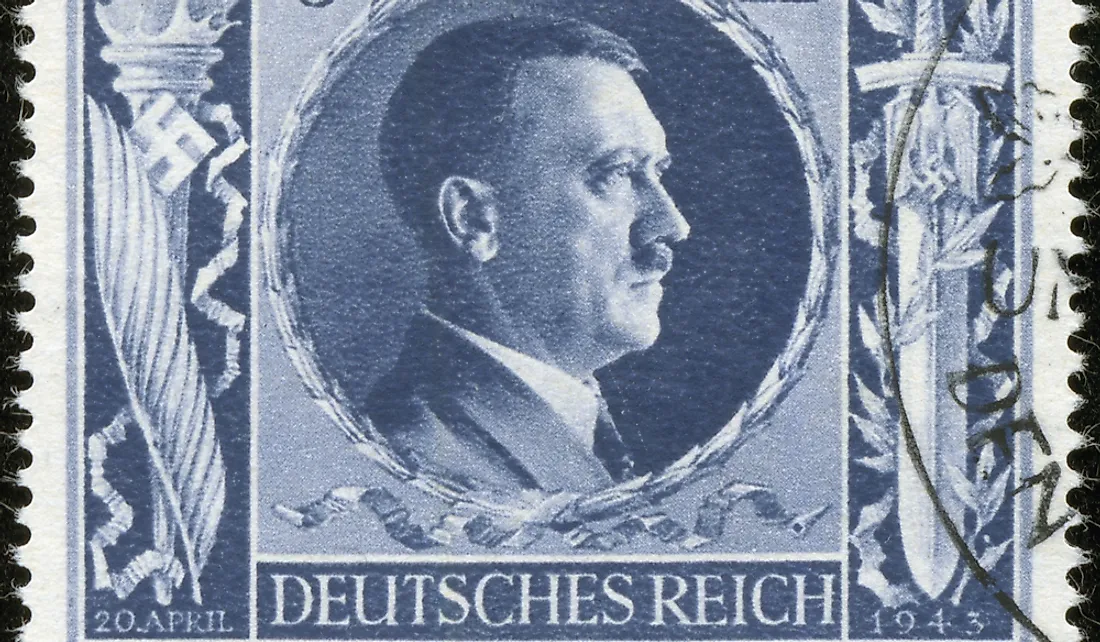What Was the Third Reich?

Nazi Germany, also known as the Third Reich, was formed in 1933 and became powerful almost instantly. It led to the decline of the Weimer Republic and the wiping out of the constitutional governance. The Weimar Republic was a constitutional democracy that was established in Germany towards the end of World War I. Adolf Hitler who was appointed the Chancellor of Germany on January 30, 1933, and in 1934 became the Führer of Germany. Hitler served as the head of state and head of government of the Third Reich until 1945. During his reign, Hitler and his Nazi Party ruled with absolute dictatorship over his subjects.
Meaning of the Third Reich
In Germany, Third Reich (Drittes Reich) means the third empire or the third realm. The Nazi government was basically the third in a row. The first Reich was the medieval Holy Roman Empire, which existed between 806 and 1806. The Second Reich was composed of the German Empire and its regime which lasted between 1871 and 1918. The third was Hitler’s Nazi Germany lasting from 1933 to 1945.
Hitler’s Ascension to Power
The Great Depression was at its climax around 1929, leading to a great decline in the economic power of the Weimer Republic. The Social Democratic and the Coalition Government under the leadership of Chancellor Hermann Muller collapsed during this period. Heinrich Bruning who belonged to the Roman Catholic Center Party was appointed the new chancellor by President Paul Von Hindenburg. He tried to reform the Weimer Republic independent of parliament but faced opposition from most people. Subsequently, the Reichstag was dissolved and elections held on July 31, 1932, with the Nazis and the Communist winning the majority of the votes. On January 30, 1933, Adolf Hitler was appointed the Chancellor.
Establishment of the Third Reich
After his appointment, Hitler immediately embarked on clamping down of the opposition and their activities. He wiped out the constitutional governance and seized power, leading to the collapse of the Weimer Republic and transformation of Germany into a totalitarian state. The country underwent the process of “Nazification” with the Nazis taking control of all the aspects of the country’s coordination. The Weimer Republic was transformed into Nazi Germany or the “Third Reich.” The regime was dominated by racism, particularly antisemitism with the Nazis considering the Germanic people as the master race.
The Collapse of the Third Reich
The Nazi supporters considered themselves as the superior race. They sought to eliminate what they believed to be inferior races such as the Gypsies and the Jews from the region. They planned and waged mass killing of Jews, which was later referred to as the Holocaust. The Nazis considered the Jews as their primary racial enemy and thought the best way to deal with them was to eliminate them from the region. This act received a lot of criticism from international platforms. The government also spent most of its time planning and attacking the Soviet Union. Nazi Germany lost most of its eastern territories following their defeat in the Battle of Kursk in 1943. The final blow on the regime was during World War II when Nazi Germany was defeated by the Allies and forced to surrender and accept defeat on May 8, 1945. Sensing defeat and possible capture, Hitler committed suicide on April 30, 1945, along with his wife of only 40 hours.











